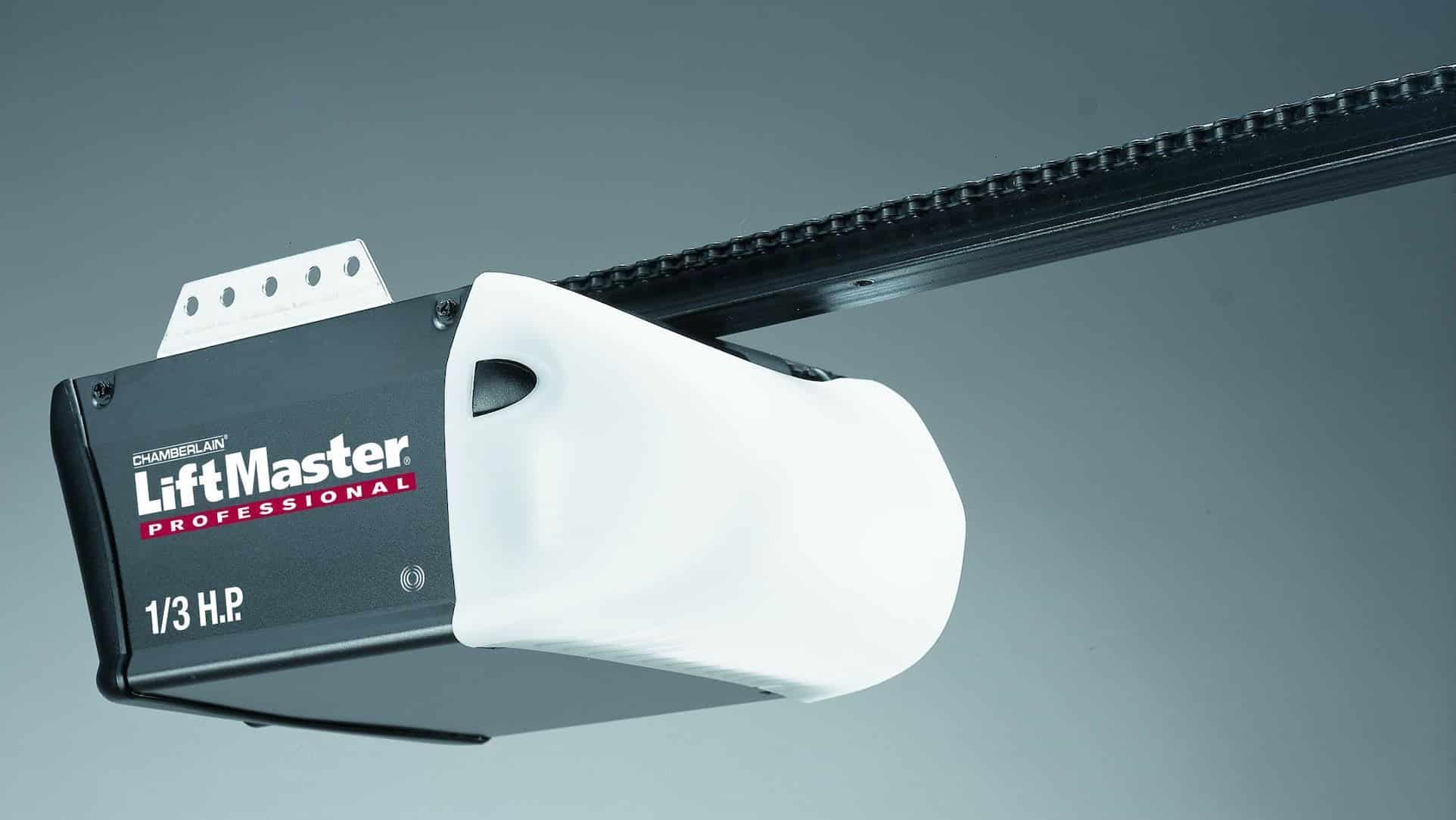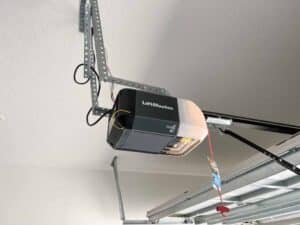Topics Covered:
The garage door opener has evolved from simple, manual operation to sophisticated, automated systems, some of which even connect to smart technology to enhance convenience, security, and energy efficiency.
While the earliest garage doors were operated completely by hand, the first electric garage door opener was introduced in 1926 by C.G. Johnson. These early models utilized a simple electric motor to lift and lower the door; and, over time, developed to include wireless remote controls, motion sensors, and smart technology. Driven by home automation and smart technology advancements, the global market for garage door openers is expected to grow at a compound annual growth rate of 5.6% from 2022 to 2028.
Types of Garage Door Openers
There are 3 main types of drive mechanisms that modern garage door openers employ.
Chain Drive
The chain drive, which uses a metal chain to push or pull the door along its track, is the most common and eliable mechanism. Even though these are the noisest option, chain drives offer durability and reliability at an affordable cost. The chain drive design offers consistent performance over many years with proper maintenance so they are a great option for homeowners who prioritize affordability and durability.
Belt Drive
Belt drives use a reinforced rubber or polyurethane belt instead of a chain to push or pull the door and are an increasingly popular option as manufacturers improve belt materials, durability, and some even offer lifetime warranties. The rubber or polyurethane belts offer a smoother, quieter operation and have a lower maintenance requirement than chain belts. With the smoother, quieter operation, though, comes a higher cost, but they remain ideal for homes where noise is a concern.
Screw Drive
Even though they are less common today, screw drive systems use a threaded steel rod to move the lifting mechanism and offer a good balance between maintenance requirements and noise levels. There are few moving parts so these drives require less maintenance than other drive options.
Power and Energy
Modern residential garage door openers are available in various horsepower (HP) levels to accommodate different door sizes and weights. The most common HP options include:
- ½ HP: Ideal for standard, single-car garage doors. About 60% of residential installations use this level motor.
- ¾ HP: These motors are used for heavier or larger doors. About 30% of residential doors use this level motor.
- 1 HP (or higher): These are often used for commercial or otherwise oversized doors, or only about 10% of homeowners.
While these power options ensure durability, smooth operation, and compatibility with doors made from a variety of materials, modern garage door openers are also designed with sustainability in mind. Modern garage door openers use DC motors which consume 75% less energy than older AC motors and most advanced model use less than 1 watt of standby power, and integrate LED lighting systems which reduce lighting energy use by up to 90%.
Smart Technology Features
As it has done with so many other parts of our daily lives, the Internet of Things (IoT), the network of devices with sensors, processing capabilities, and software that connect and exchange data, has revolutionized garage door opener technology through smart technology integration, advanced safety features, and enhanced security and convenience.
- Smart Technology Integration: Smart openers can sync with home automation and security systems like Apple HomeKit, Google Home, etc. for effortless functionality. Additionally, modern garage door openers can be connected to homeowner’s smartphones to monitor door status, receive real-time security alerts, and grant temporary access. Smart garage door openers are among the most popular smart home products adopted by about 30% of U.S. households.
- Advanced Safety Features: In addition to the safety sensors, required by law since 1993, and auto-reverse mechanism of most garage doors, modern garage door openers now incorporate technology to enhance security. For example, modern garage door openers with smart technology also use rolling code technology to generate a new, unique code each time you use your remote in order to prevent code-grabbing and improve security. Additionally, wireless communications are secured using AES 128-bit encryption (or higher) so the communication between your phone or home and your garage door is encrypted with the same level of protection as online banking.
- Convenience: Smart features enable remote operation so homeowner’s don’t need to rely on physical keys or remotes and can even integrate with Amazon Alexa or Google Assistant for voice control or geofencing technology. If there is a power outage, many garage door opener systems now include battery backups to ensure convenient operation during emergencies.
Future Trends in Garage Door Opener Technology
- Further Smart Technology Integration: Artificial intelligence will continue to advance and provide more unique services like predictive maintenance.
- Renewable Energy Sources: Solar-powered openers are emerging and offer eco-friendly solutions for sustainable living.
- Carbon-Neutral Production: Leading garage door opener manufacturers have pledged to achieve carbon-neutral production by 2030.




